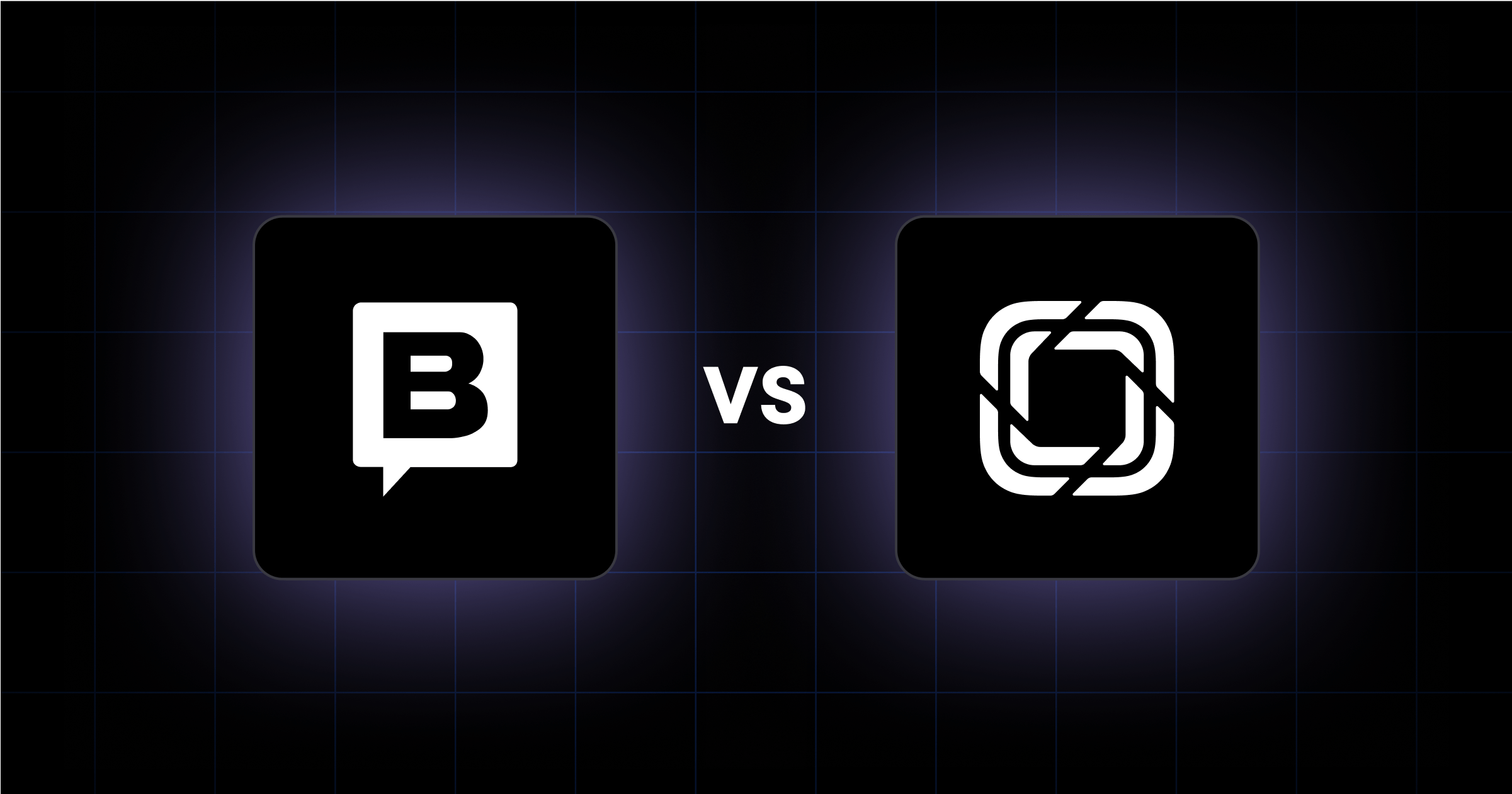Account-Based Marketing (ABM) has become a powerful strategy for businesses to target and engage high-value accounts.
And one crucial component of a successful ABM campaign is the landing page you send them to. This article will explore the secrets to creating effective ABM landing pages, along with inspirational campaign ideas and design best practices.
The Relationship Between ABM, Personalization, and UX
ABM is all about personalization and delivering a tailored experience to your target accounts. To achieve personalized account-based landing pages, it's important to incorporate a strategy that addresses individuals' unique pain points, needs, and interests. By increasing the relevance within the page, you foster a more meaningful interaction between your website and the end user.
These calculated enhancements make it more likely for users to resonate with your offering and complete the desired action (i.e sign up for an account, schedule a demo, make a purchase, etc). Ultimately, you should aim to nail your distinct value propositions, while also following the other B2B/SaaS website best practices.
To achieve personalized experiences that are strategically built to engage and convert, you must:
- Work closely with your sales and marketing teams to identify high-value target accounts.
- Develop detailed personas for key decision-makers within these accounts.
- Collect relevant data such as industry, company size, pain points, and goals.
With that said, let’s move on to how you can design an ABM landing page.

Steps to Designing an ABM Landing Page

If you’re ready to design an ABM landing page, here are some critical steps to follow.
Step 1. Identify Target Accounts and Personas
This first step requires close collaboration between your sales and marketing teams. By working together, you can pinpoint the high-value accounts that align with your business goals.
Once you have identified the target accounts, develop detailed personas for the key decision-makers of the organization. Understand what will grab their attention - what messaging and imagery will resonate with them the most?
Step 2. Gather Account-Specific Data
Next, you’ll then need to gather account-specific data to produce a truly personalized ABM landing page. This includes information about the identified accounts, such as industry, company size, pain points, competitors, and business goals. Be sure to leverage CRM data, marketing automation platforms, and any other available sources for collecting this data.
By deepening your understanding of your target accounts, you can craft content that genuinely resonates, thereby increasing your chances of capturing attention and driving conversions.
Step 3. Segment Your Audience
Segmenting your audience based on shared characteristics is vital for delivering personalized experiences. Group your target accounts into segments based on criteria like industry, size, geographical location, and business challenges.
This level of personalization enhances the user experience and increases the likelihood of conversion.
Step 4. Create Persona-Specific Content
Once you have segmented your audience, it's time to develop persona-specific content. Craft messaging that speaks directly to each persona's pain points, needs, and interests within the target accounts. This includes personalized headlines, subheadings, and body copy.
By writing custom copy for each persona, you demonstrate that you understand their challenges and have solutions to offer. Establishing trust and credibility through authoritative and compelling messaging will make users more likely to engage with your landing page.
Step 5. Utilize Dynamic Content Blocks
Implementing dynamic content blocks on your ABM landing pages can significantly enhance personalization. A key element of ABM landing page structure, these content blocks change based on the segment or persona visiting the page.
Consider using dynamic content blocks such as:
- Images, illustrations, infographics, and product UI that resonate with the segment or persona.
- Testimonials, trust bar logos, and case studies that showcase success stories relevant to the segment.
- Blogs, guides, reports, and eBooks that address the segment's specific pain points and interests.
- Interactive elements like quizzes and assessments that engage the visitor and provide highly relevant recommendations.
- Personalized CTAs that provide an answer to a problem a specific account faces.
Step 6. Optimized Form Fields
Last but not least is the design of your form submission. The key here is to gather all the information you need to empower your supplemental marketing efforts, and the sales team. Identify what these fields are; name, email, phone number, etc. Moreover, you may want to consider adding questions that ask specific to each target account. This way, you can uncover pain points or other data that will better inform your strategy to sell.
Make sure you do not overwhelm the user with too many fields to the point where they do not convert. If your fields do become more complex, you will want to experiment with multi-step forms.
Other ABM Landing Page Considerations
Throughout the design process of your ABM landing pages, here are a few other factors that should be accounted for.
Brand Consistency
Ensure that your landing pages reflect your brand's visual identity, tone, and messaging. Utilize the same brand colors and speak about your organization/product’s capabilities like you do throughout the rest of your website.
Mobile Responsiveness
Optimize the layout, font sizes, and images to ensure a seamless experience on smaller screens. Mobile responsiveness is not only important for user experience but also for search engine optimization (SEO) and accessibility.
A/B Testing for Personalization
To get the best results from your ABM landing pages, conduct A/B testing to determine which elements resonate best with your target accounts. Test different variations of headlines, images, copy, and CTAs to identify the most effective combinations. A/B testing allows you to iterate and refine your landing pages based on data-driven insights.
Integration with Marketing Automation
Integrating your ABM landing pages with marketing automation platforms enables you to streamline your lead nurturing and follow-up processes. By capturing the data submitted through your landing pages, you can trigger personalized email sequences, assign leads to sales representatives, and track the entire customer journey.
Account-Specific Chatbots
Chatbots can answer common questions, guide visitors through the conversion process, and provide personalized recommendations. This level of support can significantly increase engagement and conversions.

Examples of ABM

Now that we have explored the best practices for designing ABM landing pages, let's look at some examples of what potential ABM campaigns could look like for your organization.
1. Product Demos for Key Accounts
Many companies use ABM landing pages to offer personalized interactive product demos, tutorials, or explainer videos to their high-value accounts.
These landing pages are designed to showcase the specific features and benefits that align with the account's needs and goals. By providing hands-on experiences with their product, companies can effectively demonstrate the value they can bring to the account.
2. Exclusive Offers and Promotions
Companies can incentivize their high-value accounts to take the desired action by providing customized discounts or special deals. This approach creates a sense of exclusivity and urgency, which can drive more conversions.
3. Account-Specific Content Hubs
Account-specific hubs provide a centralized resource for the account, offering relevant content, case studies, industry insights, and thought leadership pieces. Brands can position themselves as trusted advisors by curating content that directly addresses the account's challenges and interests.
4. Industry-specific Solutions
Brands create landing pages that highlight industry-specific solutions, demonstrating their expertise and understanding of the challenges faced by their target accounts. This approach builds credibility and positions the company as a valuable partner.
5. Customized Onboarding Experiences
Customized onboarding experiences provide step-by-step guidance, tutorials, and resources that help the target account get up to speed quickly. By promoting a smooth onboarding process, companies can strengthen their relationship with the account.
6. Event Registrations and Invitations
ABM landing pages are particularly effective for driving event registrations and sending personalized invitations. By creating landing pages highlighting the event's value and relevance to the target account, companies can increase attendance and engagement. This approach allows for personalized communication and follow-up, maximizing the impact of the event.
7. Interactive Content and Tools
Companies leverage quizzes, assessments, calculators, and other interactive elements to engage target accounts and yield personalized recommendations. This approach not only captures attention but also delivers value and insights to the account.
3 Types of Account-Based Marketing Strategies
Choose the right ABM strategy for your goals and resources:
Strategic ABM
Offers bespoke experiences for each account, ideal for targeting Fortune 500 firms with personalized content.
ABM Lite
Targets small clusters of accounts with similar needs, perfect for mid-sized banks.
Programmatic ABM
Uses technology for personalized messages at scale, suitable for broad audiences.
Tools and Technologies for ABM Success
The right tech stack enhances ABM efforts:
- ABM Platforms: Tools like HubSpot and Marketo streamline efforts with account targeting and analytics.
- CRM Systems: Salesforce manages relationships and tracks interactions.
- Webstacks’ Role: Our tech-agnostic approach supports ABM strategies with web design and headless CMS migrations.
How to Develop an ABM Strategy
Ready to start with ABM? Follow these steps:
1. Define High-Value Accounts
Identify accounts aligning with business goals based on potential revenue and strategic fit.
2. Align Marketing and Sales
Ensure both teams share objectives and understand roles in the ABM process.
3. Create Personalized Content
Tailor messaging to address each account's unique needs, using customized emails and targeted ads.
4. Measure and Optimize
Track performance with metrics like engagement and conversion rates to refine strategies.

Maximize Your ABM with Exceptional Design
The key is to make ABM landing pages highly relevant and personalized. These pages should address the unique needs of each target account and guide them toward meaningful engagement with your brand and products.
Therefore, modern ABM strategies must adopt modern web design principles to run a successful campaign.
Remember to prioritize personalization, seamless user experience, and brand consistency. Test different elements, integrate with marketing automation, and leverage account-specific chatbots to enhance engagement. Maximizing design effectiveness can unlock the secrets of ABM landing page success.
Following the best practices outlined in this article and drawing inspiration from the examples showcased, you can publish landing pages that generate new customers from pools of your organization’s most valued prospects.




